Consumer debt: Introduction
Every day, I encounter people—both consumers and entrepreneurs—who are wrestling with the ever-looming shadow of financial anxiety. You know the type: those who can’t remember the last time they had a peaceful night’s sleep, thanks to the chorus of bills and debts serenading them from their nightstands.
This personal rollercoaster got me curious about the tangled web between debt and our mental sanity. Debt is not just a financial issue; it’s intertwined with our mental health. Understanding this connection and seeking support can significantly improve our overall well-being.
Over the past two and a half years, I’ve penned several cheeky blogs on this very subject, including:
THE HIDDEN EFFECTS OF FINANCIAL STRESS: WHAT YOU NEED TO KNOW
My interest in this topic led me to look into a recent study that revealed some concerning statistics about financial stress. What I found was both enlightening and relatable for many individuals we have assisted.
In this edition of Brandon’s Blog, you can explore our detailed guide on navigating the emotional challenges of consumer debt. We cover the current state of consumer debt in Canada, highlighting troubling statistics and the psychological impacts like anxiety and depression that often come with it. We’ll help you recognize the signs of stress related to debt and provide practical tips such as financial self-care, budgeting strategies, and effective repayment methods.
Remember, you don’t have to face this journey alone—seek professional help if needed. If you’re feeling overwhelmed by debt, we encourage you to contact us for a free consultation at Ira Smith Trustee & Receiver Inc. Visit our website for more resources.
What is Consumer Debt?
As a Canadian licensed insolvency trustee, I’ve seen firsthand the impact that consumer debt can have on individuals and families. But what exactly is consumer debt, and how does it affect Canadians?
Definition of Consumer Debt
Consumer debt refers to the money borrowed by individuals to finance everyday expenses, purchases, and activities. This type of debt is typically unsecured, meaning it’s not backed by collateral such as a home or car. Common examples of consumer debt credit products include:
- Credit card debt
- Personal loans
- Lines of credit
- Student loans
- Payday loans
- Mortgages
Types of Consumer Debt
There are several types of consumer debt that Canadians may encounter. Some of the most common include:
- Revolving debt: This type of debt, such as credit card debt, allows borrowers to continue making purchases and accumulating debt as long as they make minimum payments.
- Installment debt: This type of debt, such as personal loans, auto loans or mortgages, requires borrowers to make fixed payments over a set period.
- Open-ended debt: This type of debt, such as lines of credit or credit cards, allows borrowers to borrow and repay funds as needed.
The Consequences of Consumer Debt
Consumer debt can have serious consequences for individuals and families. Some of the most common include:
- High interest rates: Consumer debt often comes with high interest rates, which can make it difficult for borrowers to pay off their debt.
- Overwhelming financial stress: The pressure to make payments on time can lead to financial stress, anxiety, and depression.
- Damage to credit scores: Missed payments and high debt levels can negatively impact credit scores, making it harder to secure loans or credit in the future.
- Legal action: In severe cases, consumer debt can lead to legal action, such as wage garnishment or property seizure.
Seeking Help for Consumer Debt
If you’re struggling with consumer debt, it’s essential to seek help as soon as possible. As a licensed insolvency trustee, I can help you develop a personalized plan to manage your debt and achieve financial freedom. Whether you’re considering bankruptcy, a consumer proposal, or debt consolidation, I’m here to guide you every step of the way.
Current Trends in Consumer Debt in Canada
I’ve seen a significant shift in the consumer debt landscape over the past few years. Rising costs of living, economic pressures, and increased delinquencies are all contributing to a perfect storm of debt for many Canadians. In this section, we’ll explore the current trends in consumer debt in Canada and what they mean for individuals and families.
Rising Cost of Living
The cost of living in Canada has been increasing steadily over the past decade, with no signs of slowing down. From housing costs to food prices, transportation, and healthcare, the expenses are adding up. According to Statistics Canada:
- From 2015 to 2019, inflation remained relatively stable, averaging around 1.5-2% annually.
- In 2020, inflation dropped to 0.72% due to the economic impact of the COVID-19 pandemic.
- Inflation then rose sharply, reaching 3.4% in 2021 and peaking at 6.8% in 2022.
- As of September 2024, the annual inflation rate has moderated to 1.6%, the lowest since February 2021.
This means that many Canadians are struggling to make ends meet, leading to increased debt and financial stress.
Economic Pressures on Consumers
The economic landscape in Canada is also having a significant impact on consumer debt. The COVID-19 pandemic has led to widespread job losses, reduced hours, and reduced income for many Canadians. This has resulted in increased financial stress, as individuals and families struggle to make ends meet. According to a recent study, 50% of Canadians are living paycheque to paycheque, with 22% saying they would struggle to cover a $500 emergency expense.
Increased Delinquencies
The combination of rising costs of living and economic pressures has led to a significant increase in delinquencies across Canada. According to Equifax, the number of Canadians with delinquent debt has risen by over 10% in the past year alone. This is particularly concerning, as delinquencies can have serious consequences for individuals and families, including damage to credit scores, legal action, and even bankruptcy.
Demographic Trends
Certain demographics are particularly vulnerable to the rising tide of consumer debt. For example:
- Young adults (18-34) are more likely to be struggling with debt, with 62% of this age group reporting debt stress.
- Low-income households are more likely to be living paycheque to paycheque, with 55% of Canadian households earning less than $40,000 per year reporting financial stress.
- Single parents are more likely to be struggling with debt, with 71% of single parents reporting debt stress.
What Can Be Done?
So, what can be done to address the rising tide of consumer debt in Canada? As a licensed insolvency trustee, I believe that education and awareness are key. By understanding the root causes of debt and the consequences of not addressing it, individuals and families can take proactive steps to manage their debt and achieve financial freedom.
Additionally, policymakers and financial institutions can play a critical role in addressing consumer debt. This includes implementing policies to reduce the cost of living, providing support for low-income households, and offering debt counselling and education programs.
Factors Contributing to High Consumer Debt
It’s a feeling known all too well—those sleepless nights consumed by anxiety about debt. The clock ticks away, and all you can think about are the bills piling up. Does that sound familiar? You are not alone in this struggle. A staggering 91% of individuals express moderate to extreme stress related to their debt.
The Age Factor
Interestingly, most of those affected fall within the age group of 35-64 years. These years are crucial for many of us, balancing work responsibilities with family needs. It’s no surprise that the pressures of life can weigh heavily on our minds.
- Over 600 individuals participated in a recent survey.
- The predominant professions impacted relate to healthcare and social assistance.
- Transactional responsibilities stack up as professionals strive to care for others.
Among these professions, it’s heartbreaking to see dedicated healthcare workers experiencing financial difficulties. After all, shouldn’t those who care for us be less burdened by financial woes?
Debt and Emotional Distress
“Debt can feel like a weight that never lifts, affecting every aspect of life.”
This quote resonates deeply with many. The connection between financial strain and emotional well-being is alarmingly clear. For many, the overwhelming financial burden can lead to feelings of isolation or stress. It’s no wonder that 68% of those surveyed reported carrying significant debt—over $20,000 in many cases.
Understanding the Reasons
What drives this financial struggle? A variety of factors come into play. The survey identified:
- Job loss or income reduction—cited by 44%.
- Living beyond means, acknowledged by 42%.
- High housing market costs affect 26%.
These struggles don’t just put a dent in finances. They seep into every facet of our lives, impacting sleep, health, and relationships.
Visualizing the Stress
When we look at the data surrounding stress and debt, the picture becomes clearer. Here’s a simple chart to illustrate the emotional impact:
Group | Percentage |
|---|---|
Experience Moderate to Extreme Stress from Debt | 91% |
Majority in Healthcare and Social Assistance | Majority |
These figures highlight a significant concern in our society—especially as the very individuals responsible for caring for others face mounting financial pressures. We must acknowledge these disparities in both personal and professional settings.
The Root Causes of Consumer Debt: More Than Just Overspending
When we think about debt, many of us might immediately imagine reckless spending. But what if I told you that overspending is just the tip of the iceberg? Recent research sheds light on some surprising facts that might change how we view personal debt.
Primary Causes of Debt
According to this recent study, the leading causes of debt aren’t always what you would expect. Here are some key findings:
- Job loss/reduction in income: Cited by a staggering 44% of respondents as the primary cause of their debt. This shows just how fragile our financial situations can be.
- Living beyond means: An astonishing 42% admitted to overspending, which often leads to debt spirals. It’s scary how quickly small costs can add up.
- Housing costs: 26% pointed to high housing costs as a significant challenge. Rent and mortgages can consume a large portion of our income.
Putting it all together, it’s clear that a combination of these factors plays a significant role in creating financial struggles. This indicates that debt isn’t just a personal failing. It’s often influenced by systemic issues around us.
The Overlooked Emotional Burden
Have you ever felt isolated because of your financial situation? You’re not alone. The same study found that 30% of respondents mentioned feeling alone due to their debt struggles. That’s a significant emotional toll!
“Financial strain isn’t just about bad choices; it often stems from inevitable life circumstances.”
Doesn’t this resonate? It emphasizes how we often forget the multifaceted nature of debt. Many factors, including economic instability and job insecurity, weigh heavily on our mental health.
Tackling the Stigma
It’s easy to blame individuals for their financial woes. However, understanding these root causes can shift our perspective. People often face circumstances beyond their control. The stigma attached to overspending can make it hard for people to reach out for help.
Addressing these issues isn’t merely about personal choices; it’s about recognizing the broader economic forces at play. I’m hopeful that by discussing these topics, we can foster greater understanding and support for those affected by debt.
As we navigate through our finances, let’s remember: that counsellingpersonal choices matter, but circumstances often shape our decisions. We must be compassionate towards others and ourselves in this complex financial landscape.
Coping Mechanisms and Strategies for Managing Consumer Debt: Finding Your Way Through the Fog
We all know that money can be a source of stress. Have you ever laid awake at night, weighing bills against your dwindling bank account? Most people have at one stage or another. The anxiety about financial matters can easily cloud our minds, affecting sleep, work, and even relationships. In exploring these feelings, it’s clear that many of us are not alone. Over 91% of people report experiencing stress due to debt, according to a recent survey.
Finding Balance: Financial and Emotional Health
The intricate relationship between financial strain and emotional well-being is powerful. For instance, I found out that 55% of people have taken a proactive approach by creating strict budgets to handle their expenses. Budgeting is like being a captain of your ship—you’re charting a course through stormy seas. It keeps you grounded and helps you reach safer shores.
Many individuals also turned to professionals for help. Approximately 48% consulted licensed insolvency trustees to navigate the complex waters of debt management. Seeking help is not a sign of weakness; it’s a courageous step toward recovery.
“Taking control of finances starts with understanding where you stand.”
Understanding the Data
We need to take a moment to understand the numbers behind our struggles:
Financial Strategy | Percentage |
|---|---|
Implemented strict budgeting | 55% |
Struggled with insomnia due to debt | 52% |
This table reveals more than just numbers—it highlights the sheer impact of financial stress. Most notably, 52% of individuals reported struggling with insomnia related to their debt. This overlap is a wake-up call for each of us.
Coping Strategies: Proactive vs. Reactive
As I reflect on these figures, it becomes clear that coping strategies vary. Some people adopt a proactive approach, like budgeting. Others might respond reactively to ongoing stress, often leading to potential burnout.
- Proactive Strategies:
- Implementing strict budgets
- Prioritizing Debt Repayments
- Exploring Debt Consolidation Options
- Seeking help from professionals such as a credit counsellor or licensed insolvency trustee.
- Reactive Strategies:
- Resorting to isolation.
- Neglecting mental health.
We tend to overlook mental health awareness in financially stressed populations. Yet, the discussion surrounding this topic is essential. Reportedly, 97% of those surveyed had no knowledge of support services for financial stress. Imagine the difference that education could make!
We’re not just facing challenges; we’re fighting to reclaim our peace of mind. By discussing our financial journeys, we can illuminate the path for others who feel lost in the fog. Is there a strategy you’ve implemented that has worked for you?
The Dark Side of Debt: Unhealthy Coping Strategies
Debt can feel like a shadow, lurking in every corner of our lives. Have you ever laid awake at night, your mind racing with worries about bills? You’re not alone. A staggering 52% of people suffering from debt report struggling with sleep. It’s alarming how this financial stress impacts our physical and mental health.
Understanding the Impact
When we think about debt, we often consider the financial aspects first. However, the reality is much broader. Money troubles seep into our lifestyle and health. Here are some facts that might resonate:
- 30% of individuals turn to isolation, avoiding friends and outings due to financial worries.
- 44% experience changes in their eating patterns, often leading to unhealthy choices.
- Shockingly, a vast 97% of people are unaware of the mental health support services available to help them cope with financial stress.
As I dive deeper into these statistics, I can’t help but feel how insidious debt can be. In fact, it seems to breach not only finances but also our emotional well-being.
“Debt has a way of creeping into every aspect of life, including your health and happiness.”
Breaking Down the Stress
So, what exactly leads to such disheartening statistics? Many might think the main culprit is overspending, but job loss or a reduction in income accounts for 44% of debt-related issues. As I reflect on this, it makes sense—those of us facing uncertain economic times often find ourselves in financial traps.
The Human Cost of Coping
The coping strategies people adopt can sometimes be harmful. Here’s a deeper look:
- While budgeting (made popular by about 55%) offers a solution, it represents just one way to cope.
- Isolation and unhealthy food choices create more significant issues than they address.
As we recognize these patterns, it’s clear that the hidden costs of dealing with debt are immense. The emotional toll taken by financial stress can be debilitating.
Addressing the Stigma
We must discuss these struggles. The stigma around mental health, especially when intertwined with finances, can prevent us from reaching out. Imagine facing an uphill battle while feeling you can’t talk to anyone. We must normalize these discussions.
Awareness is key. Understanding that help exists outside of our immediate surroundings can change the narrative for many. This isn’t merely about managing debt—it’s about reclaiming our mental well-being.
In sum, life with debt can feel like a never-ending cycle of stress. Recognizing the unhealthy coping mechanisms I’ve shared is the first step in breaking that cycle. Here’s hoping we all find healthier paths amidst financial challenges.
A Path to Recovery: Transformation Through Seeking Help
Life can be a winding road. Along that road, many of us face unexpected hurdles. One significant challenge is debt. It’s not just about numbers, but how it affects us mentally and emotionally. Well, did you know that there are real success stories out there? After the insolvency process, such as bankruptcy or consumer proposal, many individuals have emerged stronger. An astounding 63% reported noticeable improvements in their mental health.
Success Stories: The Road to Recovery
Some people refer to an insolvency filing as a way out. It’s become a pathway to freedom for many. Imagine waking up one day to find that your debt is reduced to below $10,000 through a consumer proposal. This transformation not only results in financial stability but also enhances overall well-being. Isn’t it encouraging to hear such success stories? These individuals dared to seek help, and their courage paid off.
The Hidden Burden of Financial Distress
However, we must discuss systemic issues that contribute to financial distress. The numbers tell a story. The leading reasons for falling into debt often stem from job loss or reduced income. It’s not that people are reckless; it’s the circumstances that lead them to this point. And when financial strain hits, the emotional toll can be overwhelming.
Help-Seeking: A Sign of Strength
We often hear about the stigma surrounding asking for help.
“Asking for help is not a sign of failure; it’s a testament to your courage to change.”
In today’s world, reaching out is essential. Seeking assistance from licensed insolvency trustees can guide individuals through complex financial waters. So, let’s talk about how powerful it is to recognize the need for support.
The Longer View: Mental Health Benefits
The journey toward financial recovery often brings hidden benefits. Addressing these financial issues can lead to long-lasting mental health improvements. With 63% reporting better mental health after their debt challenges were met head-on, it’s clear that a brighter future exists beyond the struggles.
In summary, the relationship between debt and mental well-being is intricate. More than just financial burdens, they shape our everyday lives. There’s hope in the stories of recovery. Individuals can overcome their situations while we emphasize that seeking help can be one of the strongest things you can do. The road to recovery may be challenging, but it’s a road worth taking.
Visual Representation of Impact
Outcome | Percentage |
|---|---|
Reduced Debt Below $10,000 | Varies by individual stories |
Mental Health Transformation | 63% successfully improved |
 Consumer Debt and Mental Health: FAQs
Consumer Debt and Mental Health: FAQs
1. What is consumer debt and what are its most common types?
Consumer debt refers to money borrowed by individuals to cover everyday expenses and purchases. It is generally unsecured, meaning it’s not backed by collateral like a house or a car. Common types include:
- Revolving debt: This allows ongoing borrowing and repayment, such as credit cards and lines of credit.
- Instalment debt: Involves fixed payments over a predetermined period, such as personal loans, auto loans, and mortgages.
- Open-ended debt: Offers flexibility in borrowing and repayment amounts, like lines of credit and credit cards.
2. What are the major contributing factors to high consumer debt in Canada?
Several factors contribute to rising consumer debt:
- Rising cost of living: Increasing expenses on essentials like housing, food, and healthcare make it difficult to manage finances.
- Economic pressures: Job losses, reduced income, and economic uncertainty during events like the COVID-19 pandemic add to financial strain.
- Overspending and living beyond means: This can quickly lead to debt accumulation, especially with easy access to credit.
3. How does consumer debt impact mental well-being?
Debt can have a significant impact on mental health:
- Stress and anxiety: Constant worry about bills and repayments can lead to overwhelming stress, anxiety, and sleep disturbances.
- Depression and isolation: Financial struggles can trigger feelings of hopelessness, depression, and social isolation.
- Unhealthy coping mechanisms: Some individuals might resort to unhealthy coping mechanisms like overeating, substance abuse, or social withdrawal.
4. What are some common signs of debt-related stress?
Be mindful of these signs:
- Difficulty sleeping or insomnia due to financial worries.
- Increased anxiety and irritability, often stemming from financial pressure.
- Changes in appetite or eating habits, either overeating or undereating due to stress.
- Social withdrawal and isolation, avoiding social events due to financial constraints.
5. What are some proactive strategies for managing consumer debt?
Take control of your finances with these steps:
- Create a strict budget: Track your income and expenses to identify areas where you can cut back and save.
- Prioritize debt repayments: Focus on paying off high-interest debts first to reduce the overall cost of borrowing.
- Explore debt consolidation options: Combine multiple debts into a single loan with a lower interest rate to simplify repayment.
- Seek professional help: Consult a licensed insolvency trustee or credit counsellor for personalized advice and debt management strategies.
6. Why is seeking help for consumer debt important?
Seeking help is crucial because:
- Professional guidance: Licensed insolvency trustees can provide expert advice on debt management options like bankruptcy, consumer proposals, and debt consolidation.
- Stress reduction: Addressing debt with professional help can significantly reduce financial stress and improve overall well-being.
- Tailored solutions: Professionals can create personalized plans that suit your individual circumstances and financial goals.
7. What are some potential benefits of seeking help and recovering from debt?
Recovery brings many positives:
- Financial stability: Successfully managing debt leads to improved financial stability and a sense of control over your finances.
- Improved mental health: Reducing financial stress can lead to significant improvements in mental health, including reduced anxiety and depression.
- Increased confidence and well-being: Overcoming debt challenges often results in increased self-esteem and a more positive outlook on life.
8. Where can I find resources and support for dealing with consumer debt?
Reach out to:
- Licensed insolvency trustees: They can provide personalized advice and guidance on debt management strategies.
- Credit counselling agencies: They offer free or low-cost counselling services to help you manage your debt and improve your financial literacy.
- Government resources: Many government websites and agencies offer resources and information on financial assistance programs and debt management options.
Consumer Debt: Conclusion
Remember: You’re not alone on this journey. Change is possible, and support is available. If financial distress is weighing you down, don’t hesitate to seek help. You deserve a brighter tomorrow.
I hope you enjoyed this consumer debt Brandon’s Blog. Do you or your company have too much debt? Are you or your company in need of financial restructuring due to distressed real estate or other reasons? The financial restructuring process is complex. The Ira Smith Team understands how to do a complex restructuring. However, more importantly, we understand the needs of the entrepreneur or someone with too much personal debt.
You are worried because you are facing significant financial challenges. It is not your fault that you are in this situation. You have been only shown the old ways that do not work anymore. The Ira Smith Team uses new modern ways to get you out of your debt troubles while avoiding the bankruptcy process. We can get you debt relief freedom using processes that are a bankruptcy alternative.
The stress placed upon you is huge. We understand your pain points. We look at your entire situation and devise a strategy that is as unique as you and your problems; financial and emotional. The way we take the load off of your shoulders and devise a plan, we know that we can help you.
We know that people facing financial problems need a realistic lifeline. There is no “one solution fits all” approach with the Ira Smith Team.
That is why we can develop a restructuring process as unique as the financial problems and pain you are facing. If any of this sounds familiar to you and you are serious about finding a solution, contact the Ira Smith Trustee & Receiver Inc. team today.
Call us now for a free consultation. We will get you or your company back on the road to healthy stress-free operations and recover from the pain points in your life, Starting Over, Starting Now.
The information provided in this Brandon’s Blog is intended for educational purposes only. It is not intended to constitute legal, financial, or professional advice. Readers are encouraged to seek professional advice regarding their specific situations. The content of this Brandon’s Blog should not be relied upon as a substitute for professional guidance or consultation. The author, Ira Smith Trustee & Receiver Inc. as well as any contributors to this Brandon’s Blog, do not assume any liability for any loss or damage resulting from reliance on the information provided herein.




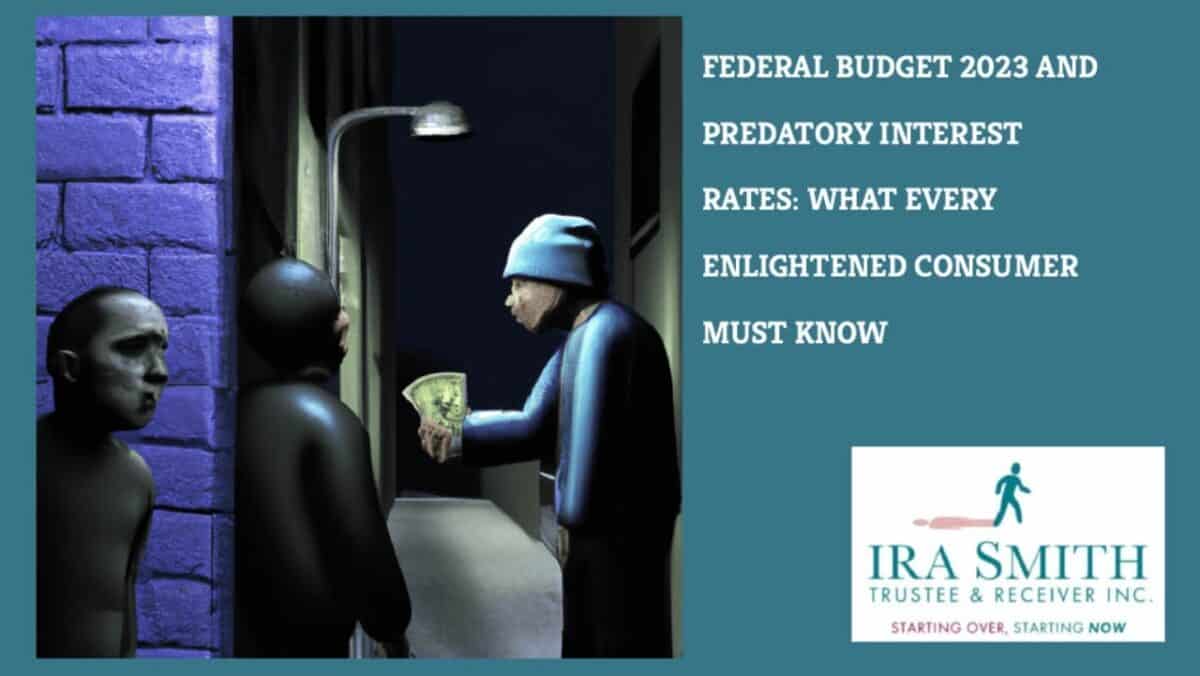
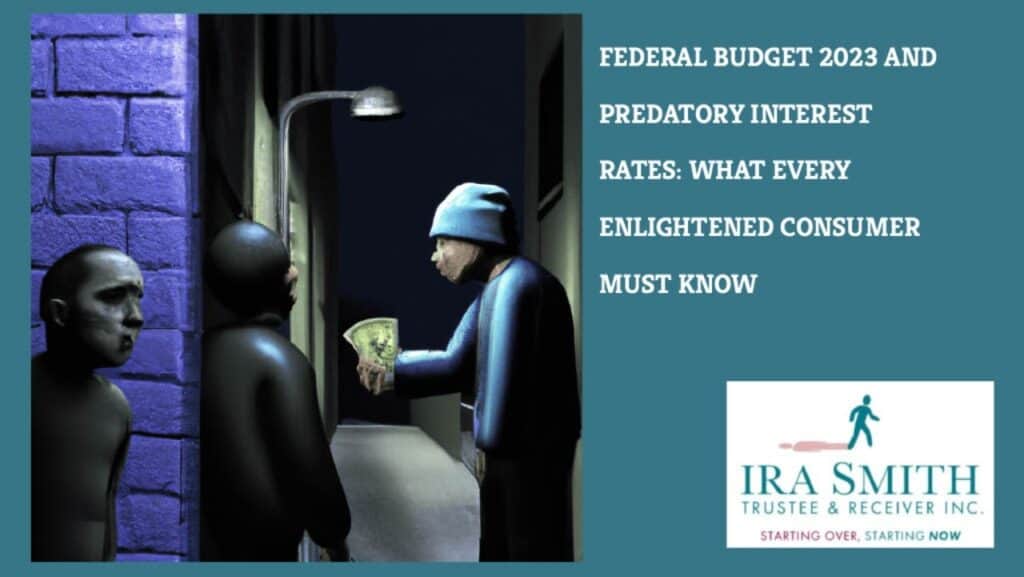
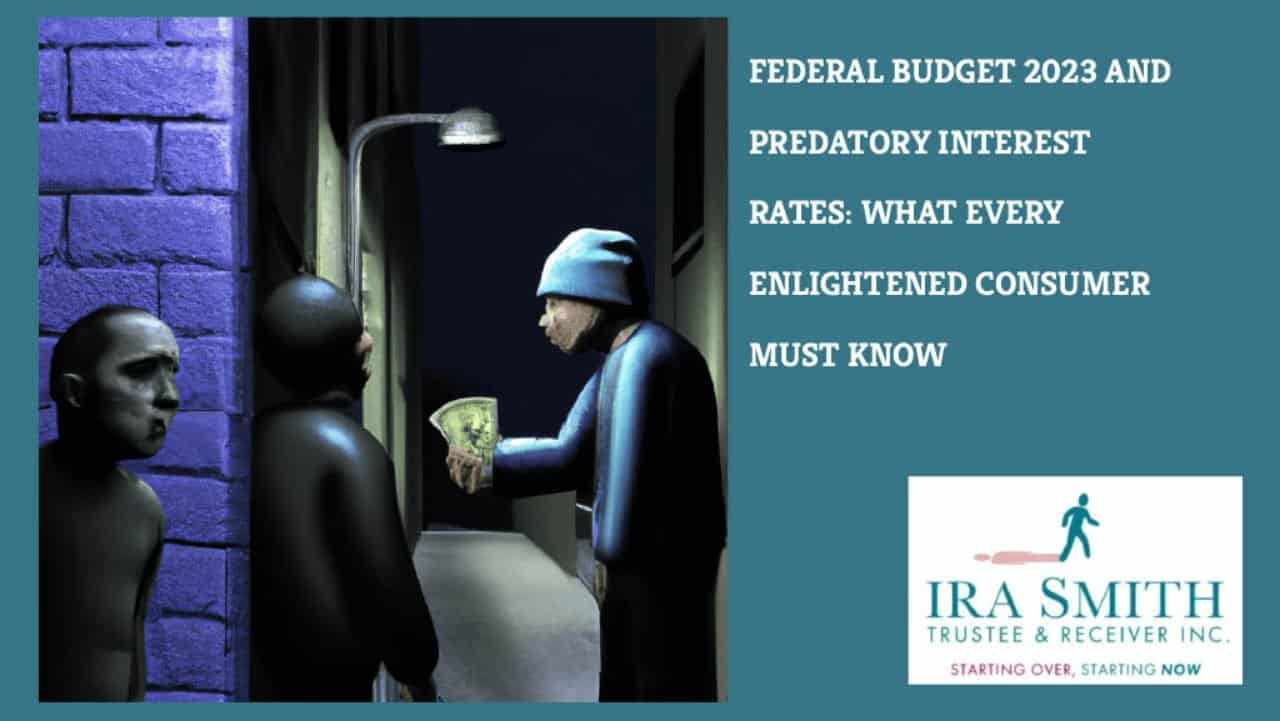




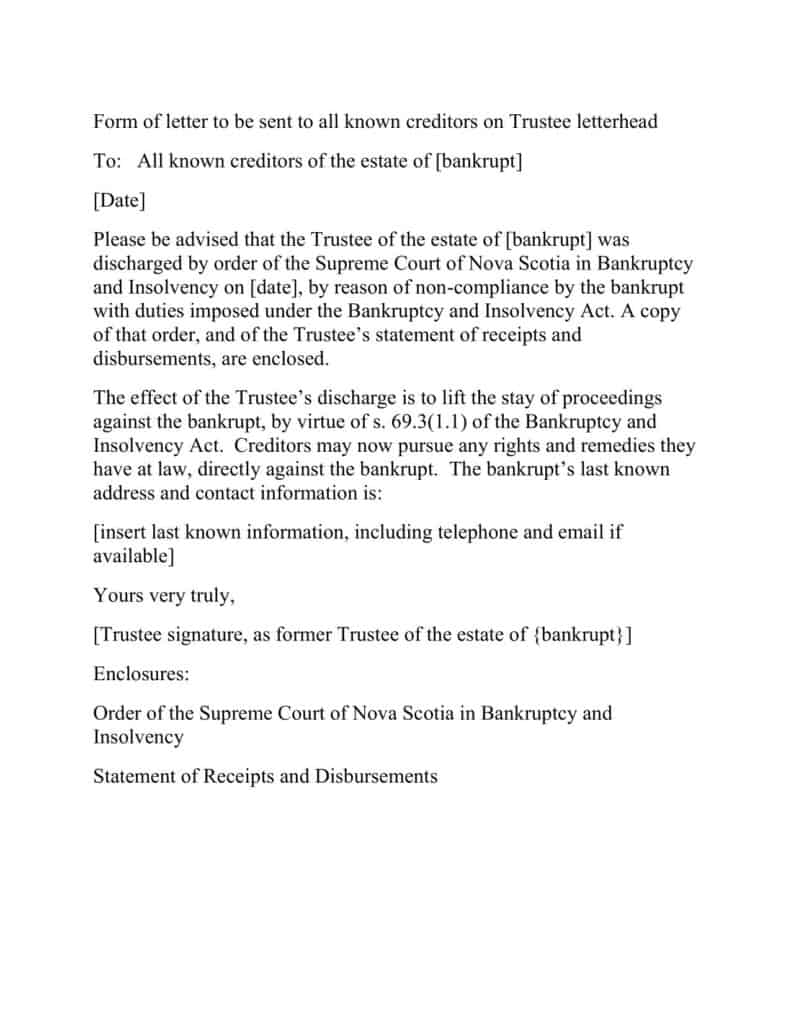



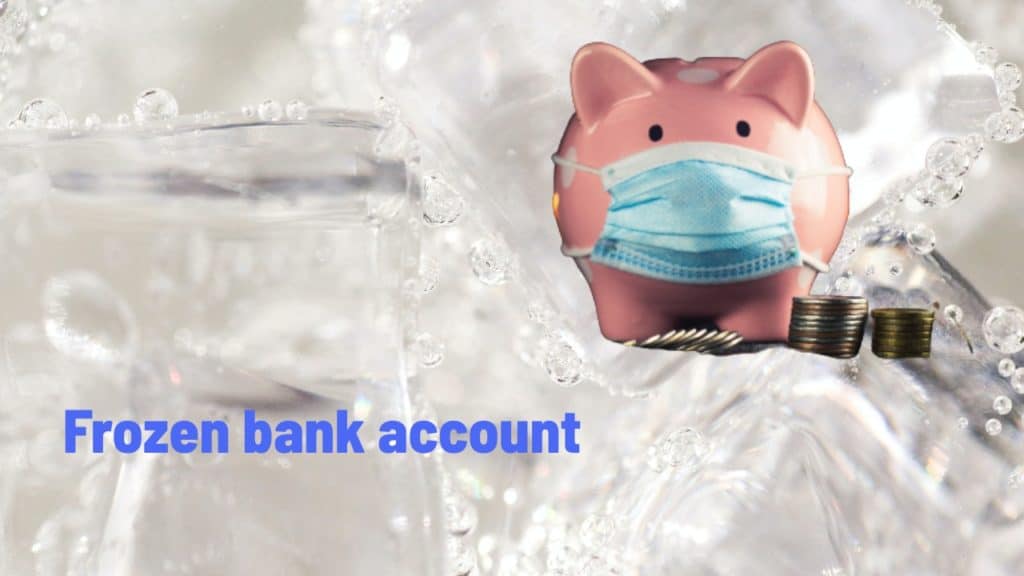





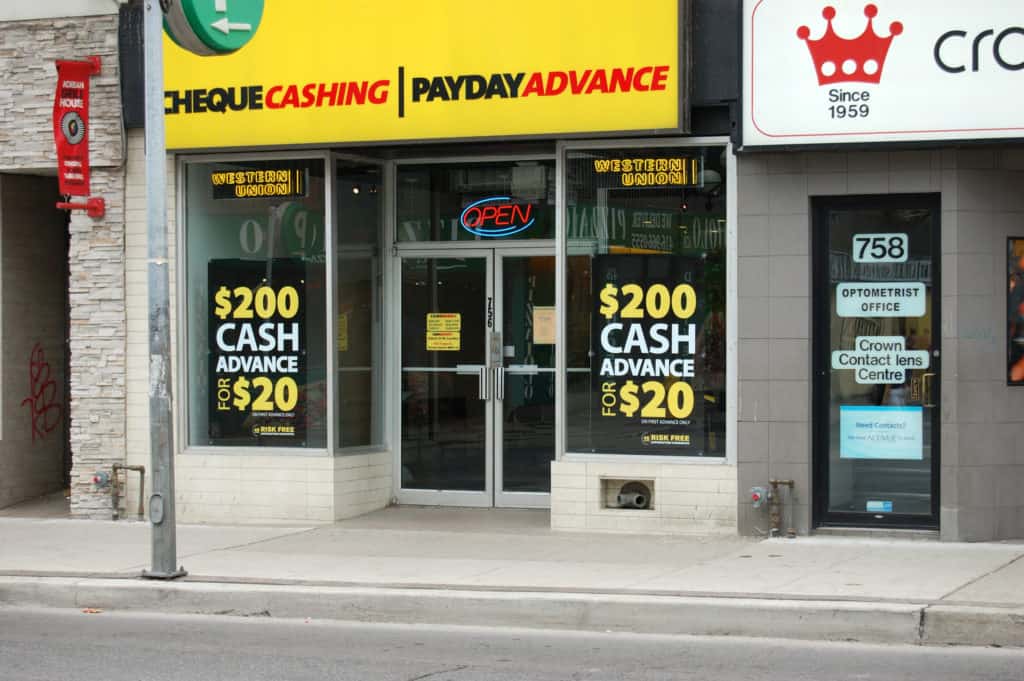 Canadian payday loans – The Problem
Canadian payday loans – The Problem